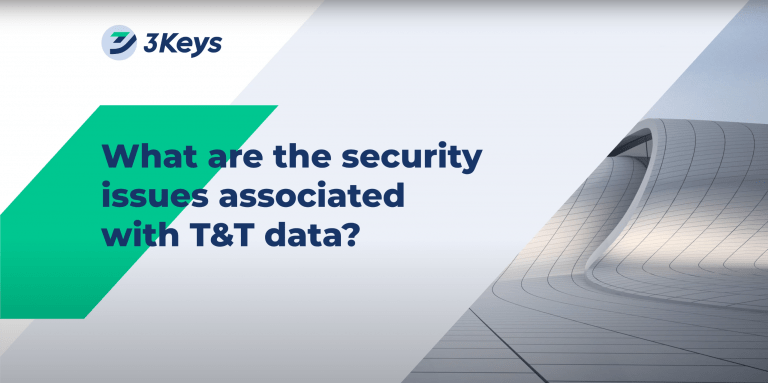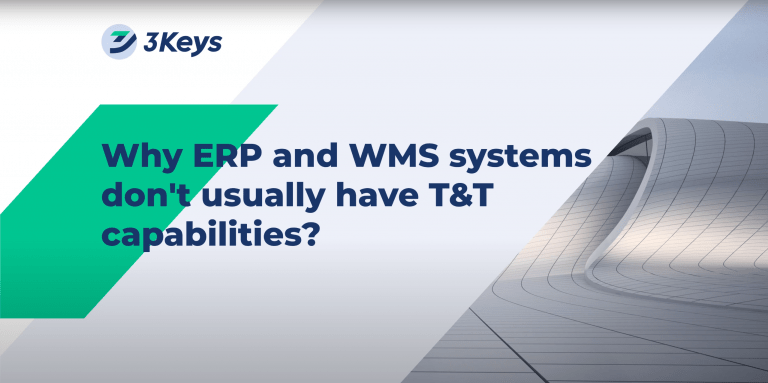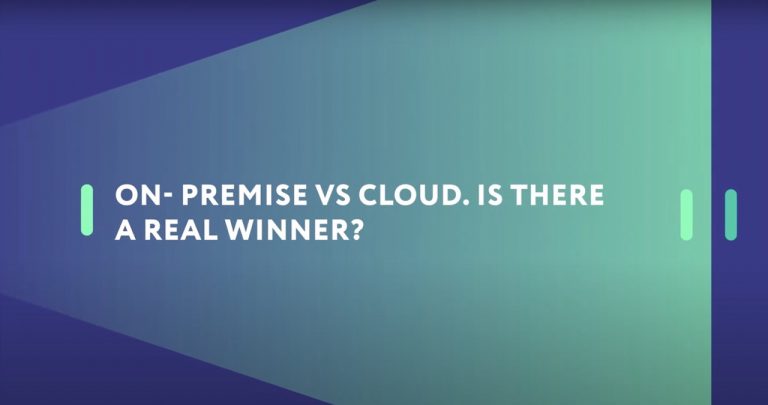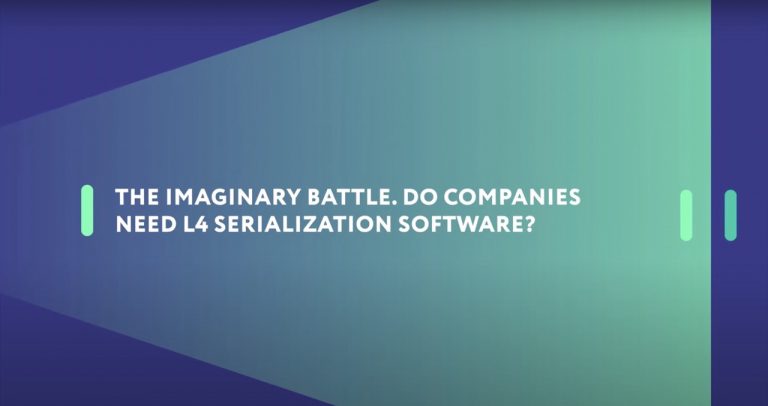The implementation of Serialization and Track & Trace impacts numerous processes within your company and necessitates a comprehensive strategy. Simultaneously, many businesses are confronting new legal requirements for traceability, often starting from scratch in this domain.
To assist you in this initial phase, we have assembled crucial baseline information on this page to guide your first steps towards compliance and proficiency.
SERIALIZATION…|L4…|EPCIS…|BATCH…|GTIN…
Check if you know Track & Trace basics
SERIALIZATION is the process of assigning a unique identifier to each specific product or packaging level. This identifier can be printed on the on the product, consumer package or on the group package, making every item or packaging level distinct and traceable individually. In the Supply Chain, TRACK & TRACE refers to the systematic approach of tracking the journey of products and tracing their history. This method ensures the ability to confirm a product's origin, understand its touchpoints, and validate its authenticity. Alongside T&T, which offers a detailed view, there's a more streamlined concept of lot traceability, where a batch of products is assigned a single identifier, tracking them as a group rather than as individuals. This approach is often used for products that don't require individual tracking, making the process more manageable without compromising safety. | TRACKING involves recording the live journey of products, including their serialization status, as they move through various points in the supply chain. TRACING is about looking back and verifying the recorded history of these products to confirm their paths and touchpoints. AGGREGATION is another important process where individual products are grouped into larger units, like cases, boxes, or pallets, creating a documented link between the unique identifiers of products and the group as a whole. Through these methods, TRACK & TRACE is achieved, ensuring that every step of a product's journey can be detailed, authenticated, and, if necessary, recalled with precision. |
3Keys talks on key topics

Unveiling the future of Track & Trace: introducing the AI-driven KVINTA assistant!
Unlock the future of Track & Trace with Kvinta AI! Experience next-level efficiency driven by AI, optimizing everything from centralized T&T communications to master-data maintenance. Dive into an era where global T&T regulations are at your fingertips, personal training becomes tailored to your needs, and leveraging data is more intuitive than ever. Get ready for a transformation that combines structured and unstructured data seamlessly. Stay tuned for the AI revolution in Track & Trace!
Frequently asked questions
Track & Trace (T&T) is not only essential for maintaining the integrity of products throughout their lifecycle but also for combating the widespread issue of counterfeiting. By enhancing supply chain transparency, businesses can achieve better operational effi ciency. Moreover, adhering to regulatory compliance ensures a brand's standing in the market. Consumer trust is further solidifi ed when they are assured that the
products they purchase have been tracked and can be traced back to their legitimate origin.
It's essential for businesses considering a track and trace project to carefully assess their needs, consult with experts in the field, and evaluate available options to determine the most suitable approach for their specific use case.
Setting up Track & Trace isn’t just about tweaking your IT. It’s a whole project that touches different parts of your business.
Sure, you’ll need some tech upgrades. This might mean new software to handle data better and maybe some hardware, depending on what your company already has. But that’s not all.
You also have to think about your day-to-day operations. How will things change in receiving, production, or shipping? Are there new rules to follow? Who’s going to manage all these changes?
And don’t forget, this kind of project doesn’t happen overnight. You’ll need a solid plan. Talk to experts, know what you really need, and understand what changes are coming. That way, you can pick the best tools and approaches for your business, making the whole Track & Trace journey smoother and more effective.
The responsibility of T&T often begins with manufacturers or importers as they initiate product serialization either to comply new regulations or implement new business requirements. However, the responsibility doesn't end there. Third- party logistics providers (3PLs), distributors, and even retailers play pivotal roles in maintaining this traceability. Their collective efforts ensure a seamless and end- to- end traceability matrix that benefits everyone in the supply chain.
In the context of implementing Serialization and Track and Trace in a company, a "solution" refers to the comprehensive set of technologies, processes, and strategies put in place to achieve the traceability objectives effectively. It involves integrating various components to ensure that products can be uniquely identified, tracked, and traced throughout the supply chain, from manufacturing to the end-user.
The solution may include the following components:
Hardware: This includes the physical devices like printers, scanners, and cameras used to generate and capture serialization data.
Software: Specialized software systems are employed to manage serialization data, product information, and track and trace records. This software may integrate with existing enterprise resource planning (ERP) systems and databases.
Data Management: Solutions require robust data management capabilities to ensure the accuracy, security, and accessibility of serialization and tracking data.
Communication Infrastructure: To facilitate real-time data exchange, a reliable communication infrastructure, such as cloud-based platforms or secure networks, may be implemented.
Regulatory Compliance: The solution should comply with relevant regulations and standards set by the industry or specific countries, ensuring that the serialization and track and trace process meets legal requirements.
Data Analytics: Analyzing the collected data can provide valuable insights into supply chain efficiency, product authenticity, and potential areas for improvement
Training and Support: Employees need to be trained in using the system effectively, and ongoing support should be available to address any issues or updates.
A well-implemented serialization and track and trace solution can help companies enhance product security, combat counterfeiting, improve inventory management, and comply with regulatory mandates in the pharmaceutical, food, tobacco and many other industries.
In Track and Trace, the concept of Levels 1-5, as introduced by international standard ISO/IEC 20242, describes a structured hierarchy of technology and processes used for tracking products:
Level 1: Focuses on individual equipment on production lines, such as serialization and packaging machines, ensuring each product gets a unique identifier.
Level 2: Involves the control and coordination of multiple devices on a single production line, ensuring seamless operations.
Level 3: Manages multiple production lines within a facility using specialized software. This software oversees the entire serialization process and controls the assignment and validation of unique serial numbers to products.
Level 4: Deals with integrating all internal systems. It orchestrates all operations with unique serial numbers, acting as a code repository. This level ensures seamless data flow between the production floor and corporate systems.
Level 5: Represents the highest integration level, where data from all facilities is collected and reported. At this level, organizations interact with external systems, such as those of regulators, ensuring compliance by reporting traceability data.
Together, these levels provide a comprehensive framework for ensuring products are accurately tracked from production to consumption.
Deciding between SaaS and On-Premises software for Track and Trace hinges on several considerations, including your organization's budget, security priorities, and scalability demands. Here's how they differ:
- Hosting and Maintenance: On-Premises software resides on servers within your premises, maintained by your IT staff. In contrast, SaaS is hosted on external cloud servers and upheld by the service provider.
- Responsibility and Cost: The SaaS approach shifts the burden of maintenance and upgrades to the provider, typically under a predictable subscription pricing model. Conversely, On-Premises setups not only involve substantial initial capital expenditure (CapEx) for licenses and infrastructure but also ongoing operational expenses (OpEx) for system maintenance, hardware upgrades, and dedicated personnel. This often requires a significant investment in skilled in-house resources to manage and maintain the system effectively.
- Security and Control: While SaaS offerings include robust security measures, encryption, and compliance protocols, organizations with highly specific or stringent data control requirements might prefer On-Premises solutions. The latter allows for direct oversight of the security infrastructure, tailored to an organization's unique specifications.
- Scalability: SaaS stands out for its scalability, with the flexibility to adapt to changing data volumes or security requirements with ease. On-Premises systems are more resource-intensive to scale, necessitating additional hardware and capacity planning for expansions or reductions.
The choice requires balancing immediate and long-term expenditures, internal resource availability, and specific organisational requirements in security and scalability. Understanding these key points can guide you toward the right decision for your Track and Trace implementation strategy.
Here are two examples.
Kvinta:
Kvinta is a SaaS solution tailored for multiple industries globally, focusing on serialization and track and trace processes. As a cloud-based platform, it offers continuous updates and broad access. Companies dealing with regulations, counterfeiting issues, or undergoing supply chain digitization can utilize Kvinta. Regardless of whether a company is involved in production, distribution, sales, or a combination of these, Kvinta delivers a broad industry solution.
SAP ATTP (Advanced Track and Trace for Pharmaceuticals):
Customized for businesses operating on the SAP ecosystem, this on- premise solution is especially suited for the pharmaceutical industry, supporting comprehensive serialization. Originally designed for the pharmaceutical sector's highest standards, SAP ATTP has evolved to cater to a broader range of businesses. 3Keys GmbH has amassed extensive experience in delivering such projects.
Hardware solutions for track and trace typically involve physical devices and equipment that aid in the process of identifying, capturing, and recording data related to product movement and traceability. Here are some examples of hardware solutions used for track and trace:
Printers: These devices are used to create labels with DataMatrix or barcodes that carry unique product identification information directly on the consumer package. They are essential for marking individual items, cartons, or pallets with scannable codes.
Scanners: fixed or handheld scanners are used to read the codes on products or packages, enabling quick and accurate data capture and recording during various stages of the supply chain from verification, quality control and rejection on production line to warehouse operations and retail sale.
Aggregation stations and complexes: for manufactures where products are bundled into larger units, such as cartons or cases, the process of aggregation is usually automated and separate equipment is used for this purpose. In the context of Track & Trace unique serial numbers of individual product units are aggregated and linked to the serial numbers of the larger packaging units. This aggregation data is crucial for traceability at different packaging levels.
In some cases, existing equipment used for printing and scanning can be upgraded to support DataMatrix. However the requirements for traceability based on DataMatrix codes are significantly higher and require adaptation of the manufacturing processes. Therefore, the ability to use existing equipment depends on its capabilities and compatibility with the specific demands of track and trace systems.
Depending on the quantity of serialized products, a track and trace system may have to process billions of operations with unique serial numbers within a short period of time. In such challenging scenarios, a significant increase in infrastructure may be necessary.
The difficulty of implementing a track and trace system can significantly vary depending on a range of factors, including the project scale, industry, regulation complexity, existing company infrastructure, business-processes of the or organization.
Here are some factors that can influence the difficulty of implementing a track and trace system:
- Project Scope: The larger the scale and complexity of the project, the more challenging its implementation can be. Implementing track and trace for a small, localized operation might be relatively straightforward compared to implementing it for a global supply chain involving multiple stakeholders.
- Data Collection and Integration: Gathering accurate and relevant data for tracking purposes can be a challenge, especially if the necessary systems and processes are not already in place. Integrating data from different sources or legacy systems can also add complexity to the implementation.
- Technology Integration: Integrating new tracking technologies with existing infrastructure and software systems can be technically challenging. It may require adjustments to hardware, software interfaces, and data formats to ensure smooth communication and data flow between different components.
- Change Management: Implementing a track and trace system often involves changes to existing processes, workflows, and employee responsibilities. Managing these changes and ensuring proper training and adoption can be a significant challenge, especially in large organizations.
- Compliance and Regulations: Depending on the industry and the nature of the data being collected, there may be specific regulations and compliance requirements to consider. Ensuring that the track and trace system meets these requirements can add complexity to the implementation.
- Data Security and Privacy: Track and trace systems involve collecting and managing sensitive data. Implementing robust data security measures and ensuring compliance with privacy regulations can be challenging but essential to protect the integrity and privacy of the tracked information.
While implementing a track and trace system can be challenging, it is not insurmountable. It often requires careful planning, collaboration with relevant stakeholders, and expertise in the specific domain. Engaging with experienced consultants or technology providers who specialize in track and trace solutions can help streamline the implementation process and mitigate potential difficulties.
From our experience a project of this nature starting from scratch usually takes 4-8 months and depends on manufacturing/distribution business landscape.
Setting up serialization and traceability from scratch can take 2-12 months (typically about 6 months), depending on your business landscape. However, for larger global manufacturers with widespread operations and complex supply chains, these projects can extend beyond the initial estimate.
The increased scale often means navigating diverse regulations and synchronizing multiple production sites, potentially lengthening the timeline. It's essential to consider these factors and consult with experts to set realistic expectations for the rollout of such comprehensive systems.
The cost of implementing a Track & Trace project can vary significantly based on numerous factors, making it difficult to provide a universal price.
1. Scope & Scale: The breadth of the project, including the number of products, facilities, countries involved, and the depth of traceability required, will heavily influence costs. A global implementation across several facilities will undoubtedly be more expensive than a single-site, local implementation.
3. Software Solutions: Proprietary software solutions with annual licensing fees are typically more expensive than open-source alternatives. Additionally, fully customized solutions will cost more than off-the-shelf software. Opting for out-of-the-box software solutions might seem economical initially, but customization for specific business needs is often inevitable. These customizations, essential for the system to effectively align with business processes, require substantial investment not only during the initial setup but also for ongoing updates and maintenance. The system must evolve with changing business strategies, market conditions, and regulatory updates, all of which contribute to recurrent costs.
4. Integration: Integrating the Track & Trace system with existing ERP, WMS, and other enterprise systems can drive additional implementation costs, especially if significant custom coding or middleware is required, but can also save resources and reduce errors in the long run.
5. Hardware Requirements: This includes the cost of scanners, printers, RFID tags, sensors, and other necessary equipment.
6. Training & Change Management: Training staff on the new system, as well as any expenses associated with change management efforts, will add to the costs.
7. Regulatory Compliance: Ensuring the system meets all local, national, and international regulations can entail additional expenses, especially if third-party audits or certifications are required.
8. Vendor Costs: Fees charged by third-party vendors for their services, be it software, hardware, consultation, or support, will factor into the total cost.
9. Ongoing Maintenance & Support: The cost of maintaining the system, updating software, replacing hardware, and accessing vendor support can contribute significant expenses over the system's lifecycle.
10. Project Management: Employing dedicated project managers or consultants to oversee the implementation might be a worthy investment but is an added expense.
11. Contingency Budget: It's wise to allocate a portion of the budget for unexpected expenses, scope changes, or unforeseen challenges.
- Detailed requirements gathering: Start by outlining the exact needs, objectives, and scope of the Track & Trace project. This helps in getting accurate quotations from vendors.
- Request proposals: Engage multiple vendors, both for software and hardware, to provide detailed proposals and quotations. This also gives you a chance to negotiate prices.
- Consider TCO (Total Cost of Ownership): Don't just consider initial setup costs; factor in the ongoing costs over the expected lifespan of the system.
- Engage a consultant: If the project's scale justifies the expense, hiring a consultant with experience in Track & Trace implementations can provide invaluable insights into potential costs and pitfalls.
- Benchmarking: If possible, connect with peers in the industry who have implemented similar projects. Their experiences and budget insights can provide a useful reference point.
- Pilot projects: Consider implementing a smaller-scale pilot project in one department or location. This can provide tangible cost metrics that can be scaled for larger implementations.
Remember, while cost is a significant factor, the benefits of a well-implemented Track & Trace system – such as improved supply chain visibility, reduced counterfeiting, enhanced customer trust, and regulatory compliance – can provide substantial ROI in the long run.
Internal resources will depend on systems and Supply Chain elements involved. From our side, we usually keep a scalable team for upsize and downsize according to project phases needs.
Most of the activities (except machinery installation, if needed) can be handled remotely and supported by our on-shore, near-shore and off-shore teams.
Starting late doing backward planning (based on deadline), expecting the deadline to be delayed, underestimation of requirements, not having a clear scope, trying to speed-up the design phase and not having the right resources and partner to deliver.
Past experiences have demonstrated that implementing ERP-based track and trace solutions, particularly those based on company’s on-site developments, can give rise to various issues, particularly in terms of system performance. These challenges often necessitate additional projects involving track and trace experts to address and rectify the shortcomings.
T&T glossary
In most countries implementing traceability for pharmaceutical and other industries National repositories are created by the regulators to gather, process, control the flow of data, store and analyze track and trace data being provided by the supply chain members. The T&T National repositories are usually have unique names and abbreviations: National Medical Verification System, Chestniy Znak, Tatmeen, Sistema Nacional de Controle de Medicamentos, NHRA-MVC, SFDA-DTTS, ASL BELGISI, NAQTY ONIM, etc.
Operator: The entity or organization that manages the day-to-day operations of the track and trace system. This could involve managing the IT infrastructure, ensuring data integrity, handling queries from stakeholders, and more.
Controlling Authority: This refers to the governmental or regulatory body that oversees and regulates the track & trace system's operations. The controlling authority sets the standards and guidelines for the system, ensures compliance from all stakeholders, and may levy penalties for non-compliance. They also coordinate with other national and international entities to ensure system effectiveness.
In essence, the "National Track & Trace system operator and controlling authority" ensures that a country's track and trace system operates effectively, transparently, and in line with national regulations and objectives.
Here are some examples of operators and authorities: FDA (USA), SFDA (Saudi Arabia), CRPT (operator of Russian national traceability system), etc.
In the context of traceability, supply chain members are the various entities or stakeholders involved in the production, distribution, and consumption of a product. These members play a crucial role in ensuring that each step of the product's journey is tracked and recorded to maintain its traceability. Here are some typical supply chain members involved in traceability:
Manufacturers: Companies or organizations responsible for producing the product. They are usually the initiators of the traceability process, assigning unique identifiers (such as serial numbers or barcodes) to each item produced.
Suppliers: Entities that provide raw materials, components, or parts used in the manufacturing process. Their inputs are traced through the supply chain to maintain quality and authenticity.
Distributors/Wholesalers: These are intermediaries that transport and store products before reaching the retailers or end consumers. They play a role in tracking the movement of products through the supply chain.
Retailers: Companies that sell the products directly to consumers or end-users. They may also participate in traceability by recording sales and distribution information.
Regulatory Authorities: Government agencies responsible for overseeing and enforcing regulations related to product traceability and safety. They may require the involvement of supply chain members to comply with traceability standards.
Logistics and Transportation Providers: Companies that handle the transportation and delivery of products within the supply chain. They contribute to the traceability by providing data on the movement of goods.
Consumers: The end-users of the products. In some traceability systems, consumers can also participate by scanning QR codes or using other technologies to access information about the product's origin and journey.
Technology Providers: Companies that develop and provide traceability solutions, such as track and trace software, barcode scanners, RFID systems, and other technologies used to capture and manage traceability data.
By involving all these supply chain members and implementing traceability systems, companies can achieve better transparency, ensure product authenticity, improve quality control, and efficiently manage recalls or product investigations in case of any issues.
Marketing Authorisation Holder is the company or legal entity that holds the authorization granted by healthcare authorities to market a medicine. The MAH is responsible for ensuring that the medicine meets the necessary quality, safety, and effi cacy standards, and they are accountable for its distribution, promotion, and post- market
surveillance. In some regions, the MAH is also referred to as License Holder.
Contracted Manufacturing Organisation is a manufacturing entity that produces pharmaceutical products on behalf of the MAH.
The Third Party Logistics refers to a service provider that specializes in outsourced logistics services. These entities:
- Might be established outside of a specifi c country or within special economic zones or free trade areas.
- Often deal with the storage, handling, and transportation of products on behalf of other businesses.
- Are commonly registered with global standard bodies like GS1.
Much like a distributor, a 3PL often manages imported products right before they undergo customs clearance, with their specifi c roles infl uenced by the agreed- upon delivery Incoterms.
GS1 is a global standards organization that develops and maintains standards for supply chain and product identification. For track and trace, GS1's standards provide a consistent framework for capturing and sharing product information throughout the supply chain, ensuring product authenticity, traceability, and efficient inventory management. This is often achieved through the use of barcodes, DataMatrix, Electronic Product Code (EPC), and the Global Trade Item Number (GTIN) system.
Reference data about the static aspects of the business, such as products, suppliers, customers, and locations. In T&T, it's essential that master data is accurate and up- to- date to ensure the traceability data generated is reliable.
Information about changes of state or other signifi cant events in the lifecycle of a product, such as its production, shipment, receipt, etc. In Track & Trace, event data is collected and managed to provide visibility into the movement and status of items as they progress through the supply chain.
Unique Identifi er: A generic term for an identifi er that is globally unique. In the context of Track & Trace, a UID often refers to a serialized number applied to an item or unit for the purpose of uniquely identifying that item or unit.
Serial Shipping Container Code can be used by companies to identify a logistic unit, which can be any combination of trade items packaged together for storage and/ or transport purposes, for example a case, pallet or parcel.
Serial Shipping Container Code can be used by companies to identify a logistic unit, which can be any combination of trade items packaged together for storage and/ or transport purposes, for example a case, pallet or parcel.
Global Location Number (GLN) can be used by companies to identify their locations, giving them complete flexibility to identify any type or level of location required.
GS1 Company Prefixes are based on the GS1 Prefixes below. Since GS1 user companies can manufacture products anywhere in the world, GS1 Prefixes do not identify the country of origin for a given product.
EPCIS (Electronic Product Code Information Services) is a GS1 standard that provides a framework for sharing information about the movement and status of goods in the supply chain. It captures and communicates detailed event data, enabling businesses to have visibility into their products' lifecycle, from manufacturing to point-of-sale or disposal.EPCIS files are structured data files that record these detailed event data. They encompass information such as where an item has been, when it was there, and its current state. These files serve as a standardized means for different systems to exchange and interpret traceability data consistently across the supply chain.


























